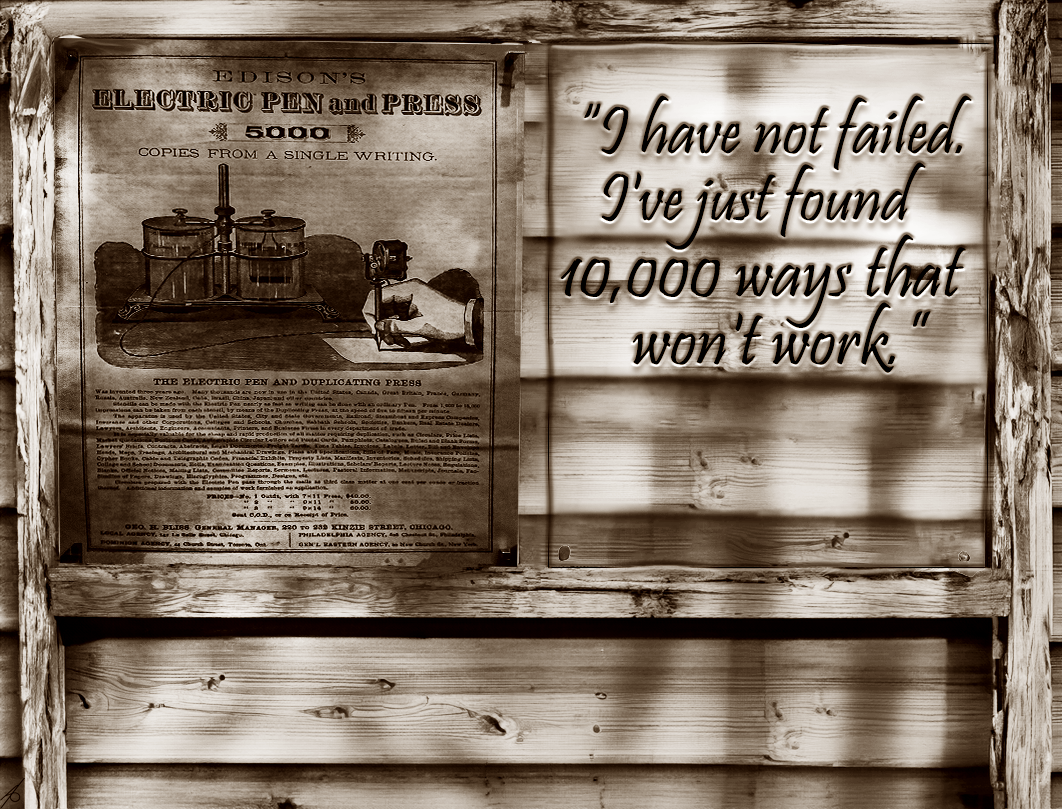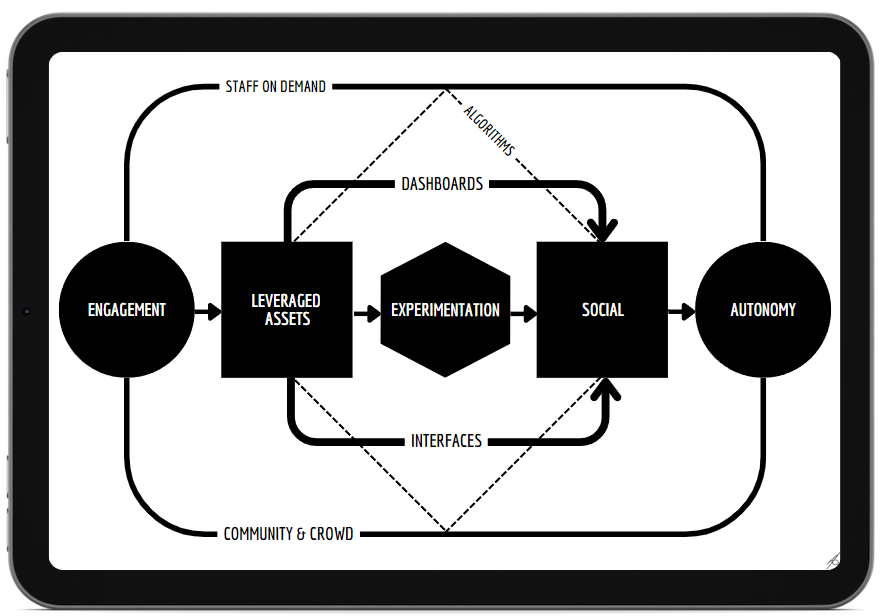
Managing an Open Innovation Culture: Autonomy, Capability, and Value
Unleash the Power of Innovation: Learn how to ride the tech wave, disrupt markets, and cultivate a culture of engagement and autonomy for 10X growth. Access new ideas and perspectives from outside the organization, manage the flow of innovation, speed up and reduce the cost of the process.🚀Read Now!
Digital innovation is a product of how quickly we adapt to changes in the technology we use. As soon as you think you get it, here goes something newer and better. Technology changes quickly, but not as quickly as some might think. The technology wave that we innovate from only changes about once a century. Our obsession with technology has a focus on innovation. It’s the rate of innovation that is mind-blowing.
Organizations experiencing 10X growth this decade are innovating using exponential technology with all the pieces in place that will enable them to disrupt so much, that their innovations may eliminate the market. Built-in agility and resilience are necessary to respond to AI, IoT, and 3D printed market disruptors that cause a rapid shift in size and impact. All the time a vertical organization takes to research, plan, test, deliver a product, and then enhance that product with features must be optimized for responsiveness to exponential changes. There will be hundreds of experiments going on at the same time in that market.
These corporations aren’t just forced to compete with but are annihilated—seemingly overnight—by a new breed of business that harnesses the power of exponential technologies, from AI and data mining to synthetic biology, blockchain, and robotics. The founders of those new companies will become the leaders of the world’s economy for the foreseeable future. - Salim Ismail, Peter H. Diamandis, Michael S. Malone, and Ray Kurzwell, Exponential Organizations 2.0: The New Playbook for 10x Growth & Impact
Organizations today need to prioritize their readiness to respond to those changes. They need to have skilled staff at each increment of the innovation service value chain to keep up with the rate of innovation. They may respond to this urgent need with epic war rooms, a Black Ops team that hacks the solution, or even disruptor teams that are designing something to compete with. Even with all these innovative devices in place, they still won't know what the competition is doing. However, the competition storms under an umbrella of the same tech stack until a unicorn pops out with the innovation of all innovations to suddenly advance technology. This presents us with new opportunities to align innovative ideas with customer demands. While figuring out what customers want, we are also asking:
- How can we get this to them faster with rapid adoption? The answer is innovating to scale.
- How can we get this to them easier and with fewer errors? The answer is innovating ideas.
- How can we ensure that we're going to be the ones coming up with the next big thing? That's your MTP.
MTP is the model for your innovation as a service. It is also the rally to engagement that requires all the attributes of SCALE and IDEAS. An MTP shared by your staff and community serves as the platform for autonomous innovation. You then provide the services used to crowdsource and implement new ideas. Sourcing, planning, implementing, and collaborating are activities in the open innovation value system.
“Open innovation has the potential to widen the space for value creation,” says Linus Dahlander and Martin Wallin, in Why Now Is the Time for Open Innovation, Harvard Business Review
We can apply the flow of innovation value to the ExO framework to organize around market agility, retaining margin, and boosting productivity. Thomas Edison, whom we all know for famously inventing the light bulb, was very good at reducing the risk of innovation. One of his first inventions at Menlo Park was the electric pen patented in August 1876. His pen would help administrative employees create stencils for reproducing documents by punching tiny holes through the paper’s surface using a small battery-powered electric motor. The demand for office productivity tools was very high at the time, and he charged $20 a pen. This pen was heavy, the motor was noisy, and the battery chemicals had to be replaced to maintain it. He improved on his first iterations but ended up abandoning the project.

He was once quoted as saying “I have not failed. I've just found 10,000 ways that won't work.” For a start-up, this should be central to the organizational system. Engaging your staff and community with assets that the organization leverages to create an environment where ingenuity and failure can spawn breakthroughs requires controls at each increment on the value chain. This is a driving force behind scaling to reach 10x potential.
Engagement and Autonomy.
Engagement and Autonomy are ways of working the organization enables by hosting engagement services on various leveraged assets. An organization can leverage its infrastructure to scale the engagement campaign that they are implementing based on usage and demand.
Take Coursera, the online learning platform known for making education globally accessible. Since its founding in 2012, Coursera has leveraged its platform to provide high-quality educational content with opportunities for learners to attain certifications or degrees and even receive instructor feedback. Recognizing the value of community and crowd in their early years, they scaled the platform from courses created by universities and private companies to include projects and presentations from individuals and subject matter experts. Peer-to-peer collaboration around diverse, interactive content offerings appeals to global audiences and democratizes education.
Due to the unpredictable outcomes of autonomy, the practice of engagement is essential for unlocking the collective power of staff, community, and crowd. Coursera uses ratings for courses and projects to provide their community with guidance when creating and choosing their next course. The engagement practice involves a system of community development, surveys, and rewards.
Dashboards and Interfaces.
At the center of open innovation is experimentation. It is how your people explore, find bugs, iterate, challenge the products, and then return with better questions. Subscription and license-based productivity tools can be leveraged, often at a nominal expense. Many people have internet-based tools outside of your organization that they prefer to use, which presents a challenge for the open innovation pool. To maintain engagement, an organization will need to leverage its products and services to retain some of that intellectual property, mine data, and convert the crowd to a community. Providing your community with an interface to monitor their experiments can empower them with tools to manage those variables.
A good example of this is Kickstarter. They are leveraging their platform to help individuals create a community, validate, and fund their business ideas. Members of their platform can analyze how a project campaign is going by utilizing a dashboard interface to track their funding progress and manage backer relationships. Their users can adjust their campaigns as needed while helping to grow the larger Kickstarter community. Companies like Fitbit and Peloton maintain engagement by leveraging their fitness tracking interface to follow a user's activity across multiple devices and platforms. Other high-performing ExOs like Adobe and Atlassian use interfaces to support experimentation programs that encourage employees to explore new ideas and prototype autonomously or as a team. Engagement is the attribute in focus as these experiments push the development of features and improvements at these companies. Providing their people with tools to automate, collaborate, and manage their work helps innovation thrive by allowing individuals to develop their ideas in alignment with the company’s goals.

Experimentation Churns Value.
As users experiment with your interfaces and manage their work from your dashboards, the exponential organization receives the added benefit of collecting data for algorithmic functions that improve the user and customer experience. We see this in how Spotify leverages a vast music library with personalized recommendations, usage reports, and playlists. Beyond personalization, Spotify also leverages its platform to allow the socialization of music preferences with features like shares, followers, group sessions, and integrations of the most popular devices and apps. There is no additional effort required from the user besides authentication.
Autonomous cultures publish interfaces to allow users to be the innovation agents and champions that can make decisions, pivot, and delete without mercy or guilt. The organization decentralizes decision-making for teams, partners, and leadership to conduct their experiments with instant feedback. It creates an autonomous re-engagement loop for improvements found while building and using solutions. In his book "The Lean Startup," Eric Ries talks about the importance of leadership to facilitate the environment for experimentation. Innovation management includes providing a way for users to evaluate their experiments. An experiment without the answers is a test.
I would say, as an entrepreneur everything you do - every action you take in product development, in marketing, every conversation you have, everything you do - is an experiment. If you can conceptualize your work not as building features, not as launching campaigns, but as running experiments, you can get radically more done with less effort. - Eric Ries
Although the flow of innovation value needs to be a core organizational capability, innovation comes from people, not plans. Factors like time, transparency, and autonomy foster an environment where running experiments can spur the best ideas. Organizations should seek to manage open innovation resources that widen the lane of value creation for the following reasons:
- Staff and users are closest to the inefficiencies. The staff that creates solutions are closer to the development process and likely to have ideas to address code defects and gaps in the supply chain. Engaging the user through social interfaces and algorithms can reveal the interpretation of shared values in new and unthought-of ways.
- Engagement at the edge. The business portfolio needs to shift at the edge from a top-down flow of work into more of a free-flowing structure to leave room for scaled agile practices. Capture delivery and solution ideas that can cause the innovation riptide effect that builds the portfolio backlog for the business as it gets managed.
- Room for improvement. Open innovation leaves room for staff to go back and tighten up their work, try new things, or research alternatives. Cycling open space into release iterations leads to solutions that recover lost time, resolve technical debt, and create new efficiencies.
- Innovation is part of the culture. “To bring the best user experience to customers through innovative hardware, software, and services” is the 2023 mission statement at Apple. Innovation is embedded into their company values. Themes like design thinking, meritocracy, and failing forward should be part of the company culture to support a system of value-driven innovation.
Managing the lifecycle of new ideas doesn’t happen on its own. Still, it requires an engagement practice, some autonomy, and allocation of resources to areas of the value chain where we want to experiment for different results. Innovation management enables us to respond to competition and disruptive ideas at the speed of innovation. Maintaining engagement among an autonomous staff and community can be challenging, but with a clear purpose and understanding, experiments can be monitored and socialized. Autonomy relies largely on organizational culture and the resources available for consumption. At the top of all of this is strategy. Strategy answers the question of How we will deliver on our Massive Transformational Purpose. Game-changing ideas aren’t only coming from the chief game-changer, but with strategy and local context, the producers, staff, vendors, community, and crowd can continuously flow innovation back into our program.
#DigitalInnovation #ExponentialTechnology #MarketDisruption #InnovationStrategies #OpenInnovation #AgileCulture #AutonomousInnovation #InnovationManagement #ExperimentationCulture #InnovationLeadership #MassiveTransformationalPurpose #UserEngagement #InnovationValueChain

ExO Insight Newsletter
Join the newsletter to receive the latest updates in your inbox.









